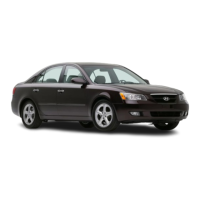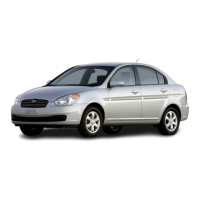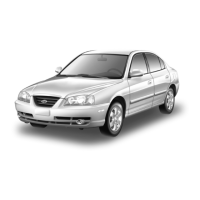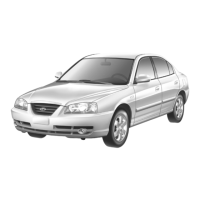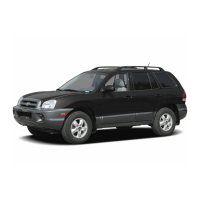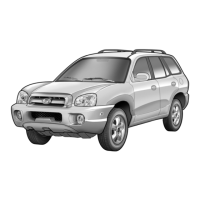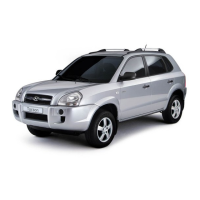Do you have a question about the Hyundai 2006 Tucson and is the answer not in the manual?
Specifies required gasoline octane rating, type, and usage of gasohol/MTBE/methanol.
Emphasizes wearing seat belts at all times for occupant safety and provides usage precautions.
Explains the SRS system, airbag function, sensors, and safety precautions during deployment.
Details the layout and function of the instrument cluster and various indicator and warning lights.
Explains how to set, cancel, resume, and use the cruise control system for automatic speed management.
Details operation of the climate control system, including vents, fan speed, and air intake modes.
Lists essential checks before starting the engine, including tires, fluids, and lights.
Details the gear selector positions (P, R, N, D) and sports mode operation.
Explains ESC function in stabilizing vehicle during cornering and adverse conditions.
Explains engine power delivery to all wheels and driving tips for 4WD vehicles.
Lists practices for safe braking, including parking, wet brakes, and downhill driving.
Guides on towing requirements, trailer hitches, brakes, safety chains, and vehicle preparation.
Explains how to determine correct load limits, including seating, cargo, and towing capacities.
Outlines troubleshooting steps for engine starting issues, including stalls and failures.
Provides detailed instructions and safety precautions for jump starting a vehicle.
Outlines steps to take if the engine overheats, including stopping and checking coolant.
Explains TPMS indicators for low tire pressure and system malfunctions.
Details the procedure for changing a flat tire, including obtaining tools and safety steps.
Recommends professional towing services and provides towing information for operators.
Explains common causes of corrosion and how to protect the vehicle, especially from road salts and moisture.
Guides on washing the car frequently, using shade, and employing proper cleaning solutions.
Outlines service requirements, maintenance categories, and the importance of following the schedule.
Lists scheduled maintenance services for emission control and performance, recommending receipt keeping.
Lists items requiring more frequent service under severe driving conditions like dust, salt, or heavy traffic.
Lists regular checks for engine compartment, vehicle exterior, and interior.
Explains the importance of engine oil and the procedure for checking its level.
Provides steps for changing engine oil and filter, including adding oil and disposal.
Suggests dealer inspection for brakes due to their essential role in safety.
Guides on locating, examining, and replacing fuses and fusible links.
Explains the three main emission control systems: crankcase, evaporative, and exhaust.
Explains the catalytic converter's function and precautions to prevent overheating and fires.
Provides information on supplied tires, warranty, service, and recommended inflation pressures.
Explains standardized information on tire sidewalls, including manufacturer, size, and TIN.
Advises informing NHTSA and Hyundai Motor America about safety defects.
Provides engine specifications including type, bore/stroke, displacement, and timing.
Lists recommended oil and grease standards, capacities, and change intervals for vehicle components.
| Brand | Hyundai |
|---|---|
| Model | 2006 Tucson |
| Category | Automobile |
| Language | English |


